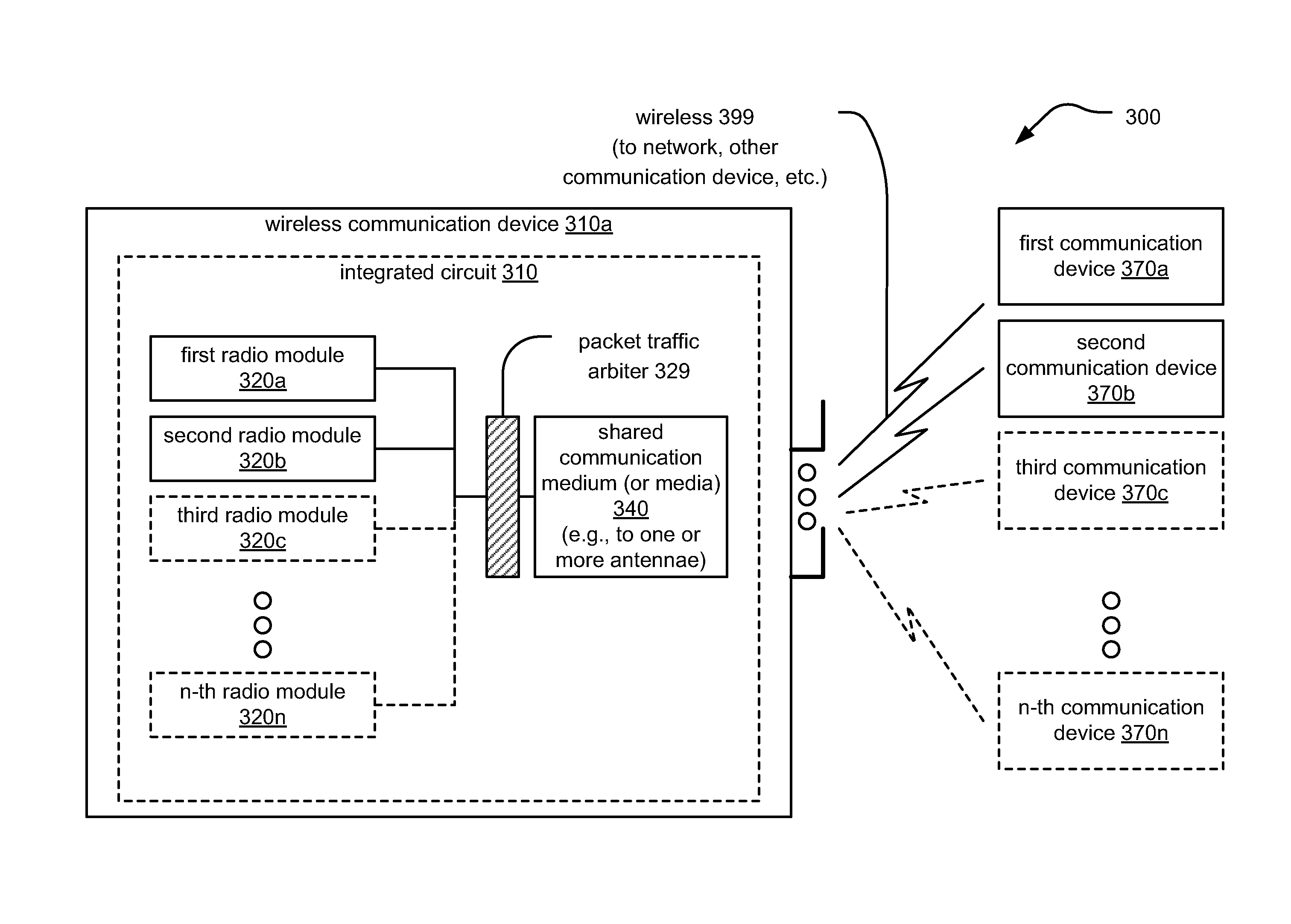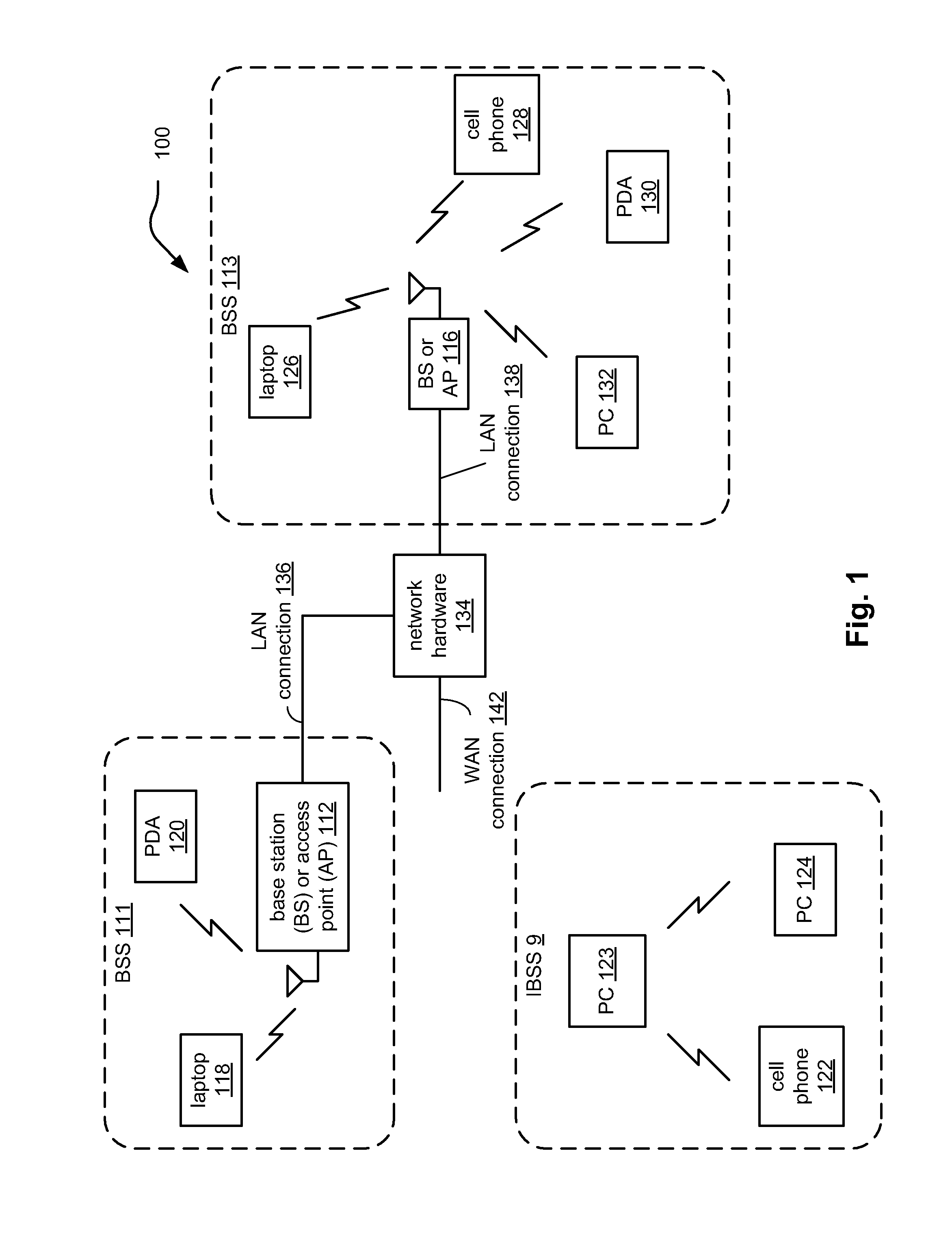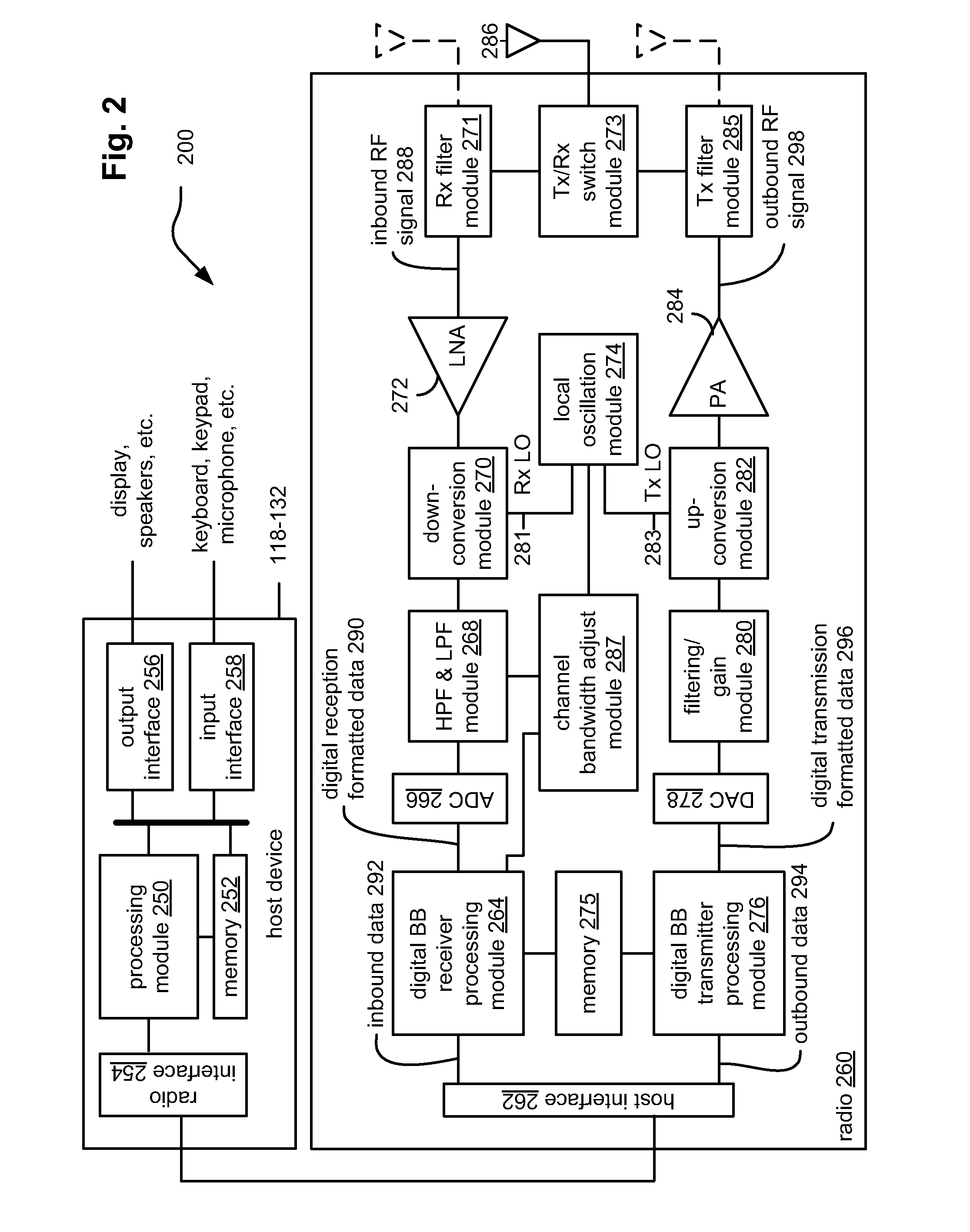Collaborative coexistence of co-located mobile WiMAX, wireless LAN, and/or bluetooth radios
a wireless lan and co-location technology, applied in the field of communication systems, can solve problems such as unrealized desires
- Summary
- Abstract
- Description
- Claims
- Application Information
AI Technical Summary
Benefits of technology
Problems solved by technology
Method used
Image
Examples
embodiment 600
[0084]Referring to embodiment 600 of FIG. 6, the frame structure of a first protocol 601 includes a plurality of frames (e.g., frames 601a, 601b, 601c, 601d, and 601e) and periods of time between frames in which there is no activity at all in accordance with that first protocol (e.g., between frames 601c and 601d and after frame 601e).
[0085]This embodiment employs three separate radio modules (e.g., first radio module 620a, second radio module 620b, and third radio module 620c), though it is noted that as few as two radio modules or more than three radio modules can alternatively be employed without departing from the scope and spirit of the invention.
[0086]The first radio module 620a operates by entering and exiting from a power savings mode based on the frame structure of the first protocol 601. The first radio module 620a is active during the duration of each of the frames 601a, 601b, 601c, 601d, and 601e and is inactive during the time periods between frames 601c and 601d and af...
embodiment 900
[0101]FIG. 9 illustrates an embodiment 900 of CTS2SELF operation among multiple radio modules. This embodiment 900 shows the reservation of a shared communication medium (e.g., shared by multiple, co-located radio modules within a communication device) so that it is available for only one of the radio modules in the communication device. For example, when a given radio module sends a clear to send (CTS) packets / frames addressed to itself (CTS2SELF frame), then the shared communication medium is indicated as being busy to that particular radio module.
[0102]Considering an embodiment in which one of the radio modules is a WiFi / WLAN radio module and another of the radio modules is a WiMAX radio module, the IEEE 802.11 standard allows a WLAN communication device (e.g., a device with a WiFi / WLAN radio module) to send CTS packets addressed to itself (CTS2SELF). These packets specify the duration field that is used by all WLAN nodes to update their network allocation vector (NAV) used in vi...
embodiment 1000
[0106]FIG. 10 illustrates an alternative embodiment 1000 of CTS2SELF operation among multiple radio modules. This diagram shows how the use of a CTS2SELF operational scheme can be employed to protect communication via a WiMAX communication link.
[0107]A WiMAX radio module 1020a informs the WiFi / WLAN radio module 1020b that there is an upcoming WiMAX data transfer at time t that will have duration of D. The WiFi / WLAN radio module 1020b may be informed that the duration of the upcoming WiMAX traffic will be 5 milli-seconds in duration (e.g., D=5 ms).
[0108]The WiFi / WLAN radio module 1020b then prepares the CTS2SELF frame with the duration set to 5 ms and transmits. A successful transmission of CTS2SELF frame prevents any WiFi / WLAN activity for 5 ms, enough for the WMAX radio module 1020a to complete the transaction. The communication medium becomes free once the WiMAX activity is over and WiFi / WLAN devices can then use the medium until the next WiMAX slot (approximately 5 ms later). The...
PUM
 Login to View More
Login to View More Abstract
Description
Claims
Application Information
 Login to View More
Login to View More - R&D
- Intellectual Property
- Life Sciences
- Materials
- Tech Scout
- Unparalleled Data Quality
- Higher Quality Content
- 60% Fewer Hallucinations
Browse by: Latest US Patents, China's latest patents, Technical Efficacy Thesaurus, Application Domain, Technology Topic, Popular Technical Reports.
© 2025 PatSnap. All rights reserved.Legal|Privacy policy|Modern Slavery Act Transparency Statement|Sitemap|About US| Contact US: help@patsnap.com



